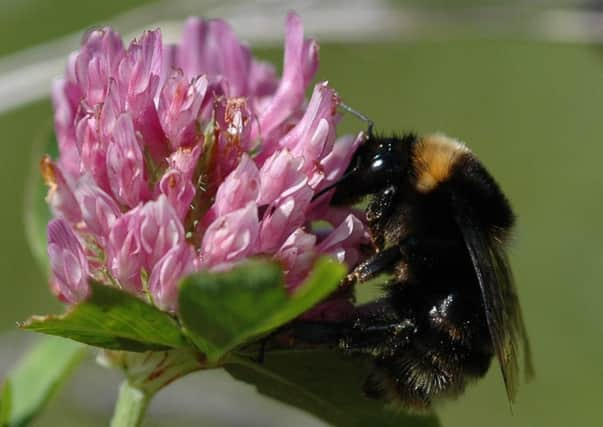Previously extinct bee isflying again in the Rye area


The short-haired bee has nested for the first time in a quarter of a century.
The short-haired bumblebee disappeared from our shores in the 1980s and a mission to reintroduce it was launched at the RSPB Dungeness reserve on Romney Marsh.
Advertisement
Hide AdAdvertisement
Hide AdAfter two releases of queen bees at the site experts have now recorded offspring worker bees for the first time.
Dr Nikki Gammans, who leads the project, said: “This is a milestone for the project and a real victory for conservation. We now have proof that this bumblebee has nested and hatched young and we hope it is on the way to becoming a self supporting wild species in the UK once again.
“It’s been a long journey to get here, collecting queens in the Swedish countryside, scanning them for diseases and then eventually releasing them at Dungeness.
“Seeing worker bees for the first time is a fantastic reward for all that hard work, but we still have a way to go to ensure this population is safe and viable.”
Advertisement
Hide AdAdvertisement
Hide AdA vital part of the project has been the creation of suitable habitat for the new bees. Dungeness reserve warden Natalie Holt said, “I have to give special thanks to our team of local volunteers who have worked particularly hard in the preceding years to prepare the best home for the bees. This included spreading ‘green’ hay into new areas of the reserve where the cows and sheep then helped by sowing its seeds of crucial food plants, such as clover and vetch, by treading them into the soil.”
Bumblebees are among the most threatened wildlife in the UK – of 25 species, seven are declining and two have been declared extinct. The State of Nature report launched in May highlighted the short-haired bumblebee project as a beacon of hope for nature, Dr Gammans said, “We are very proud to have recorded the first signs of success.”
The groundwork for the project, backed by Natural England, RSPB, Bumblebee Conservation Trust and Hymettus, started four years ago when local farmers began sowing wildflowers to create the ideal habitat for the bees.
As well as the short-haired bumblebee, the conservation work at Dungeness has also resulted in increased sightings of other rare bumblebee species this summer including the ruderal bumblebee, the red shanked carder bee, the moss carder bee and the brown banded carder bee.
Advertisement
Hide AdAdvertisement
Hide AdShort-haired bumblebees were once was once widespread across the south of England and its range stretched from Cornwall to Yorkshire. But it began to decline in the second half of the 20th Century as the wildflower rich grassland habitats it relies on began to disappear and was eventually declared extinct in the UK in 2000.
Bees in the UK continue to suffer declines due to a loss of habitat.